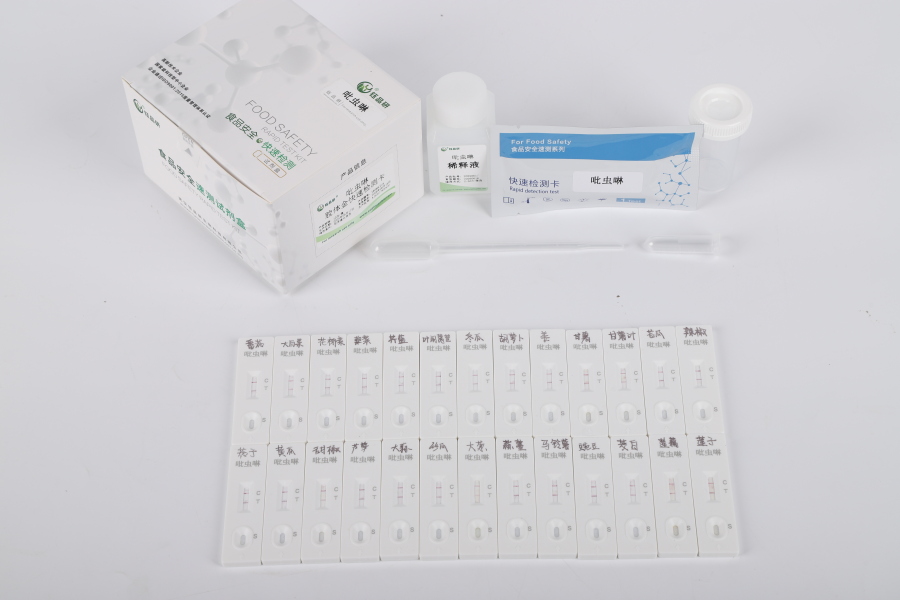With the improvement of living standards, people's demand for fruits and vegetables is not limited to quantity, but also focuses on safety and quality. However, the problem of pesticide residues has always been an important hidden danger affecting the safety of fruits and vegetables. According to relevant data, the rate of pesticide residues exceeding the standard in fruits and vegetables in some areas is still at a high level, and long-term consumption may pose a potential threat to human health. Therefore, building a scientific and systematic solution for the whole process of fruit and vegetable pesticide residue control has become a key link in ensuring food safety.
First, reducing the amount at the source: reducing the risk of pesticide residues from the planting end
The first step in the treatment of pesticide residues in fruits and vegetables is to reduce the use of pesticides from the source. In the planting process, priority can be given to varieties that are resistant to diseases and insects, and by cultivating fruits and vegetables with natural resistance At the same time, the promotion of biological control technologies, such as the use of natural enemy insects, microbial pesticides and other alternative chemical pesticides, can not only effectively control pests and diseases, but also reduce chemical residues. In addition, the scientific and rational use of pesticides is also crucial. It is necessary to strictly follow the principle of "safety interval", avoid the use of high toxicity and high residue pesticides near harvest, and lay the foundation for the safety of fruits and vegetables from the source of planting.
Second, scientific testing: precise control of residues
Detection is the "eye" of governance. Only by accurately grasping the types and content of pesticide residues in fruits and vegetables can targeted treatment measures be formulated. At present, commonly used detection technologies include rapid detection and accurate quantitative detection. Rapid detection methods are suitable for scenes such as fields, markets, etc., and can initially screen high-risk samples in a short period of time; while laboratory accurate quantitative detection can clarify the specific residual substances and content, providing data support for subsequent treatment. Wuhan Yupinyan Bio has been deeply involved in the field of food safety testing for many years. Its research and development of rapid detection test strips, immunoassay kits and other products can achieve efficient and accurate detection of common pesticide residues, and help producers and regulatory departments quickly grasp the safety status of fruits and vegetables.
Third, treatment technology: multi-means to degrade residues
For fruits and vegetables that already have residual risk, it is necessary to reduce the residue through scientific treatment technology. Common degradation technologies include physical degradation (such as ultraviolet irradiation, high temperature treatment), chemical degradation (such as ozone oxidation) and biodegradation (such as microbial metabolism). The physical degradation method is simple to operate and suitable for surface residue treatment of epidermal fruits and vegetables; biodegradation technology uses the action of specific microorganisms or enzymes to decompose pesticides into harmless substances, which is environmentally friendly and efficient. Wuhan Yupinyan Bio combines its own technical advantages to develop a variety of biodegradable materials and enzyme preparations, which can play a role in fruit and vegetable cleaning, processing and other links, effectively reducing the risk of residues and improving the safety of fruits and vegetables.
Fourth, process control: the whole chain to ensure safety
From harvesting, transportation to sales, every link needs to be strengthened. When harvesting, fruits and vegetables should be avoided from being over-squeezed and damaged to reduce the risk of microbial contamination; appropriate temperature and humidity should be maintained during transportation to prevent fruits and vegetables from deteriorating; in the sales process, the purchase inspection system should be strictly implemented, and fruits and vegetables should be sampled to prevent products with excessive residues from entering the market. In addition, consumers can also purchase through regular channels when purchasing, and pay attention to pre-treatment such as cleaning, peeling, and blanching to further reduce the impact of residues.
Fifth, follow-up treatment: to deal with accidental residues
Even after multiple prevention and control, individual fruits and vegetables may still exceed the standard. At this time, it is crucial to establish a sound follow-up treatment mechanism. For fruits and vegetables that slightly exceed the standard, professional degradation technology can be used for treatment; for products that seriously exceed the standard, they need to be destroyed or treated harmlessly in accordance with regulations to prevent them from flowing into the table. Wuhan Yupinyan Bio not only provides technical support for testing and treatment, but also provides residue treatment solutions according to actual needs to help relevant enterprises and institutions deal with emergencies and ensure food safety.
fruit and vegetable pesticide residue treatment is a systematic project, which needs to form a closed loop from source prevention, scientific testing, technical management, process control and follow-up treatment. Wuhan Yupinyan Bio has always been committed to providing all-round support for fruit and vegetable safety. Through technological innovation and Product Research & Development, it helps to build a whole-process safety assurance system from field to table, so that consumers can eat with confidence and peace of mind.


